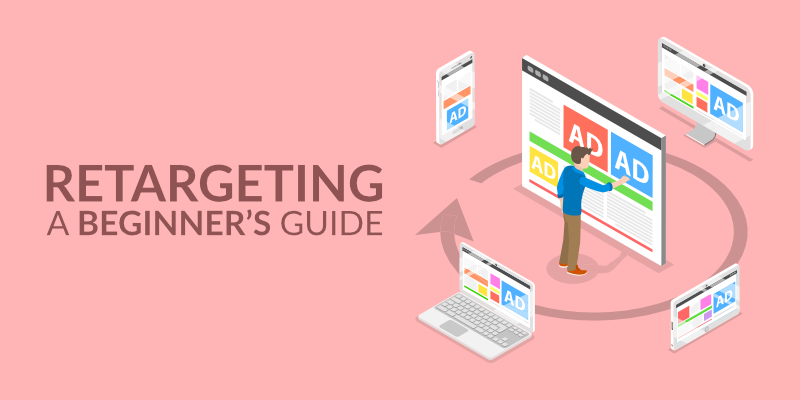Retargeting ads, also known as remarketing ads, are a powerful tool in digital marketing that help re-engage potential customers who have previously interacted with your website or app. By targeting these warm leads, retargeting ads can significantly increase conversions and improve your overall marketing ROI. This guide will explore the essentials of retargeting ads, including how they work, their benefits, and best practices for creating effective campaigns.
What Are Retargeting Ads?
Retargeting ads are a form of online advertising that targets users who have visited your website or used your app but did not complete a desired action, such as making a purchase or filling out a form. These ads are designed to bring these users back to your site by reminding them of your products or services and encouraging them to convert.
How Do Retargeting Ads Work?
Retargeting ads work by using tracking pixels or cookies to collect data about your website visitors. When a user visits your site, a cookie is placed on their browser, allowing you to follow them as they browse other websites or social media platforms. This data is then used to display personalized ads to these users, reminding them of your brand and encouraging them to return and complete their purchase or action.
Benefits of Retargeting Ads
- Increased Conversions: Retargeting ads focus on users who have already shown interest in your brand, making them more likely to convert compared to new visitors.
- Improved ROI: By targeting warm leads, retargeting ads can deliver a higher return on investment compared to other forms of advertising.
- Enhanced Brand Recall: Repeated exposure to your brand through retargeting ads keeps your business top-of-mind for potential customers.
- Personalized Marketing: Retargeting ads allow you to create personalized messages based on user behavior, increasing the relevance and effectiveness of your ads.
- Cost-Effective: Since you are targeting users who are already familiar with your brand, retargeting ads can be more cost-effective than acquiring new customers.
Types of Retargeting Ads
- Site Retargeting: Targets users who have visited your website but did not complete a desired action. Ads can be displayed across various websites and platforms they visit.
- Search Retargeting: Targets users based on their search behavior. This type of retargeting displays ads to users who have searched for specific keywords related to your business.
- Email Retargeting: Targets users who have interacted with your emails but did not take the desired action. These ads can be displayed on social media or other websites.
- Dynamic Retargeting: Displays personalized ads featuring products or services that users viewed on your website. This is particularly effective for e-commerce businesses.
Best Practices for Retargeting Ads
- Segment Your Audience
Segment your audience based on their behavior and interactions with your site. For example, create different retargeting campaigns for users who visited specific product pages, abandoned their shopping carts, or spent a significant amount of time on your site. This allows you to tailor your ads to different user segments and increase their relevance.
- Create Compelling Ad Creative
Your ad creative should be visually appealing, relevant, and compelling. Use high-quality images, clear and concise messaging, and a strong call to action (CTA). Highlight any special offers, discounts, or incentives to encourage users to return and complete their purchase.
- Set Frequency Caps
While it’s important to keep your brand top-of-mind, bombarding users with too many ads can lead to ad fatigue and annoyance. Set frequency caps to limit the number of times a user sees your retargeting ads within a given time frame.
- Use Dynamic Retargeting
For e-commerce businesses, dynamic retargeting can be highly effective. Dynamic ads display the exact products or services users viewed on your site, reminding them of their interest and encouraging them to complete their purchase.
- Optimize Landing Pages
Ensure that the landing pages your retargeting ads lead to are optimized for conversions. The landing page should be relevant to the ad, load quickly, and have a clear and compelling CTA. A seamless user experience from ad click to conversion can significantly improve your results.
- Test and Analyze
Regularly test different ad creatives, messaging, and targeting strategies to see what works best for your audience. Use A/B testing to compare different variations of your ads and analyze the results to optimize your campaigns continuously.
- Exclude Converted Users
Avoid showing retargeting ads to users who have already converted. This not only saves your ad spend but also prevents annoying your customers with irrelevant ads. Use exclusion lists to ensure converted users are not targeted again.
Conclusion
Retargeting ads are a powerful strategy to re-engage potential customers and increase conversions. By understanding how retargeting works and implementing best practices such as audience segmentation, compelling ad creative, frequency caps, dynamic retargeting, optimized landing pages, continuous testing, and excluding converted users, you can create effective retargeting campaigns that drive results. Start leveraging retargeting ads today to maximize your marketing efforts and achieve your business goals.





